It’s rifle season. And it’s getting late into the fall. When you look at the weekend forecast, temps are going to be in the teens or even single digits. Do you cringe? Or do you think, “Game on!”
When the weather turns very cold, you shouldn’t hesitate to go hunting. In fact, you should get motivated when you see a major cold snap coming just in time for your hunt. When bitter cold temperatures arrive, it can mean fewer people on the mountain. Plus, it vastly improves your chances of seeing animals on their feet.
In very cold conditions, strategic clothing and a logical approach to staying comfortable will extend your hunting day. Being able to hunt those extremely cold dawn temperatures and all the way through dusk can increase your odds of harvesting an animal.
Here are a few tips to take advantage of these cold weather opportunities while staying comfortable in the field…

TIPS FOR STAYING DRY
Moisture is the enemy in cold weather and you must find ways to let sweat escape while preventing outside moisture from entering. This starts with your clothing materials.
Base Layers
Wear base layer materials that help manage your body’s moisture and dry quickly. Fabrics like merino wool are ideal, as they retain their insulative properties even if damp. Quick drying synthetic base layers are also important. Don’t even think about cotton – and that includes your socks and underwear.
Outerwear
Waterproof, breathable outerwear is also critical. A high quality hardshell jacket and pants will evacuate moisture from the inside while protecting you from snow and moisture from the outside. A garment with a waterproof, breathable membrane is also windproof – a major key to avoiding convective heat loss.
Managing Moisture
While hiking through elk and mule deer country, you will build up a sweat. Sitting after that hike will quickly lead to a chill. When you are about to begin a climb or any period of exertion, layer down. It’s better to be a bit cold when you begin the climb than to be drenched in sweat a few minutes later. You might even carry and extra base layer to swap out when the original becomes wet. When it’s time to sit and glass, bundle up with your dry gear and you’ll maintain the heat that you generated on the hike.
Footwear
The same principle applies to your feet. Cold feet are very uncomfortable and they will quickly end a day in the field. Waterproof, insulated boots are ideal. Use a boot with a breathable membrane to help evacuate moisture. We highly recommend Kenetrek boots. They’re warm, waterproof, comfortable in rugged terrain, and they’ll last you for many years.
Even in a breathable boot, your feet will inevitably build up some level of sweat. For that reason, carry an extra pair of socks in a plastic zip bag. If your feet become sweaty and then cold, swap them out. Putting on a fresh pair of socks will make an incredible difference, adding comfort and preventing blisters.
Choose a high quality merino wool or merino-synthetic blend sock and avoid cotton at all costs. Again, we can’t say enough about Kenetrek. Check out Kenetrek’s cold weather socks here.
Shelter
Finally, be prepared to stay dry through sleet and snowfall. Our ultralight Hunter’s Tarp weighs just 4.3 ounces and is totally waterproof. This is a no-brainer to keep in your daypack. It’s a ground tarp for quartering or deboning meat. It’s a pack liner for transporting game bags full of meat. And in these foul-weather situations, it’s a great waterproof shelter. Stake it out with trees or trekking poles and paracord to make a great little storm shelter or glassing shelter.

TIPS FOR EFFECTIVE LAYERING
You’ve heard this one a thousand times but it remains important. Carry base layers, insulating layers and quality outerwear throughout your hunt. They key however, is to use them strategically.
Layering Priorities
If you’re on a budget, your order of importance should be your outerwear first – those waterproof, breathable jacket and pants aren’t cheap. Save up and buy good ones. Next come your base layers. Try to find high quality merino wool or synthetics. And lastly, insulating layers. These mid-layers are the easiest to find at reasonable costs. A cheap down puffy from your favorite discount store will do. Sure, it will be heavier and bulkier than the expensive version with 800-fill goose down. But if you’re making cuts somewhere, that’s usually the layer to do it.
Bring at least two different mid-layers of varying weights in the truck so that you can mix or match depending on the weather. For example, pack a synthetic fleece jacket for milder temps and a puffy down jacket for very cold weather.
Gaiters
When the weather is foul, gaiters become another important piece of gear. If the ground is wet or if there’s snow, eventually water can wick up your pants and then down your socks. You might think your boots are leaky when in fact, moisture is moving in from your calf down. Gaiters provide an extra layer of protection to keep your feet and the bottom of your pants dry.
Extremities
In addition to the layers, winter calls for a warm hat and serious gloves. Choose a hat with insulation and plenty of cover for the ears. A neck gaiter will also make a big difference. And in extreme cold, a balaclava that covers everything including the neck is useful.

OTHER TIPS FOR STAYING WARM
Sometimes, an external heat source can make all the difference. Depending on where you’re hunting and how far into the backcountry, consider bringing a thermos full of hot coffee, tea or soup. Warming from the inside out will make you feel much better on a bitter cold day. Soup is especially nice because the extra calories will keep you warm for an extended period of time.
Alternatively, you might bring a lightweight stove system, like a Jetboil, in your daypack. Even in harsh conditions, a Jetboil will heat water in no time. Then, some instant coffee or tea is all you need to warm up out in the backcountry. In addition to beverages, this allows you to fix a hot meal while you’re on the mountain. During those long hours of glassing in the cold, a hot lunch or cup of coffee can make a big difference to keep you energized and focused.
Calories are Fuel
And finally, when the weather is extremely cold, pay attention to your calorie intake. Bring enough food and make sure you’re snacking throughout the day. When you’re feeling cold, a bite to eat can recharge your system. If the weather is extremely cold, plan on having a snack every hour. Late season mule deer and elk hunting means lots of glassing – so there will be plenty of stationary time to snack while you’re behind the glass.
If you have questions or need help getting ready for your next hunt, please don’t hesitate to reach out! The later seasons offer some of the best hunting conditions of the year – get out there, take advantage of it and have fun!



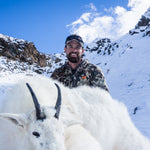





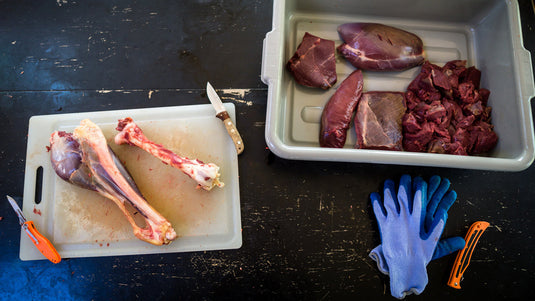
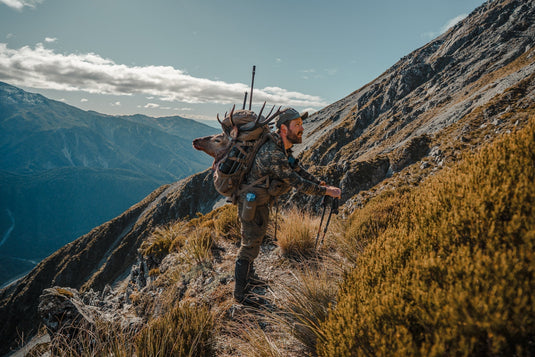
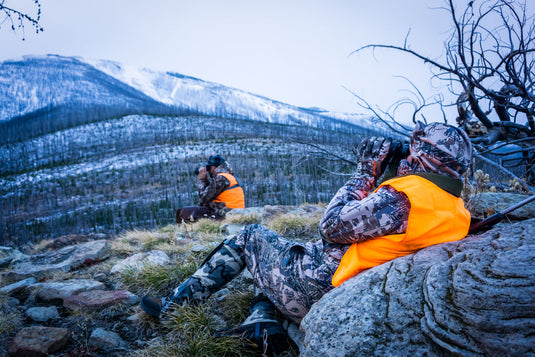
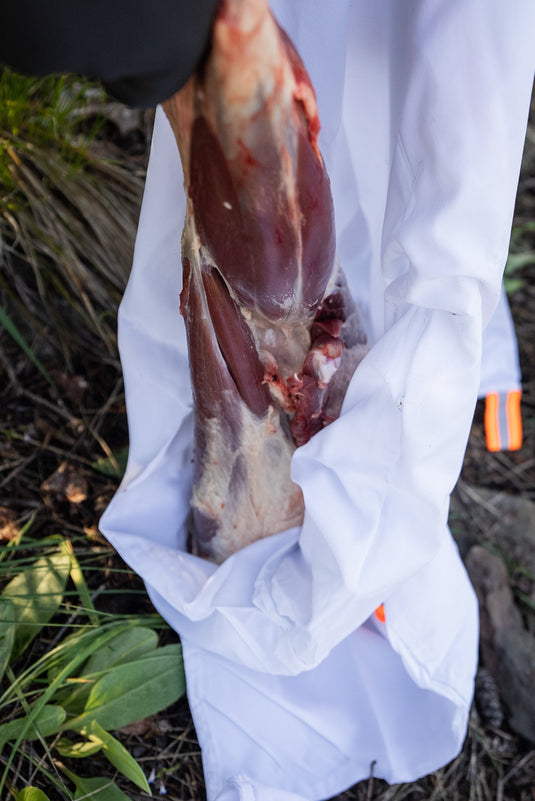
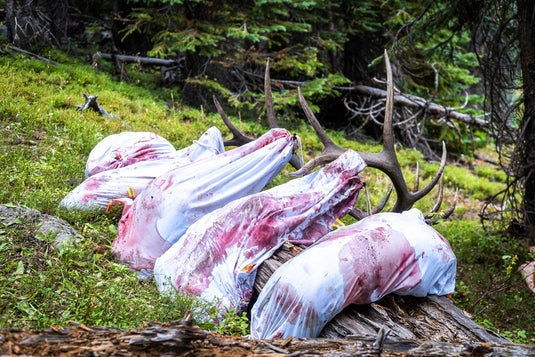
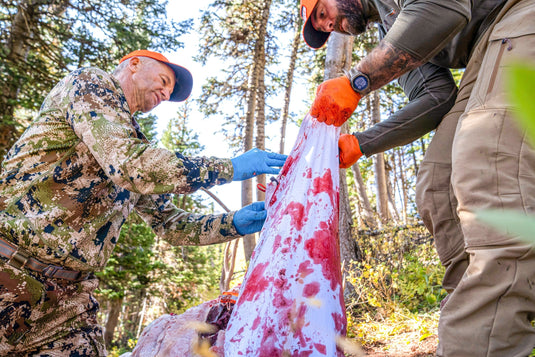
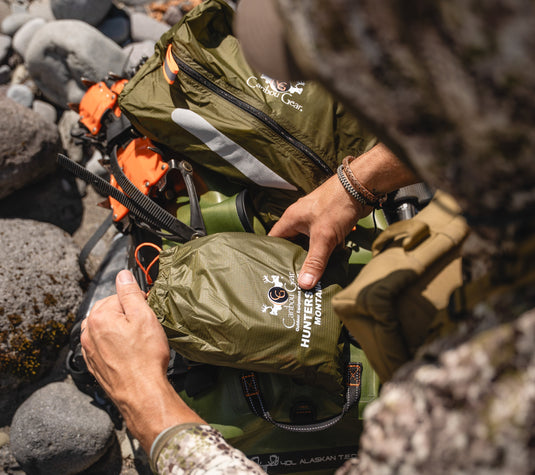
Great information. Thanks. I am a newbie hunter and still learning tricks of the trade.